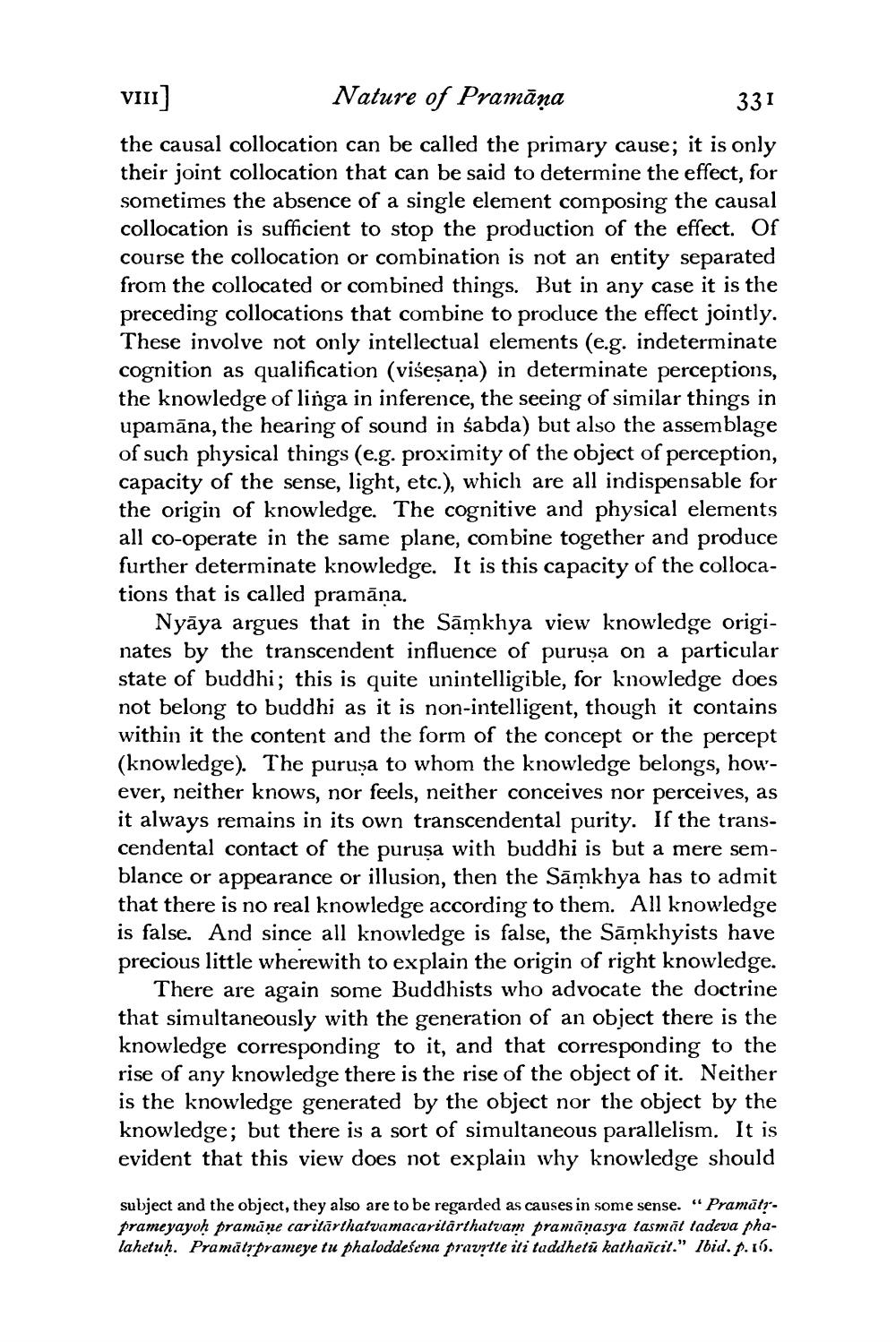________________
VIII]
Nature of Pramāna
331
the causal collocation can be called the primary cause; it is only their joint collocation that can be said to determine the effect, for sometimes the absence of a single element composing the causal collocation is sufficient to stop the production of the effect. Of course the collocation or combination is not an entity separated from the collocated or combined things. But in any case it is the preceding collocations that combine to produce the effect jointly. These involve not only intellectual elements (e.g. indeterminate cognition as qualification (višesaņa) in determinate perceptions, the knowledge of linga in inference, the seeing of similar things in upamāna, the hearing of sound in śabda) but also the assemblage of such physical things (e.g. proximity of the object of perception, capacity of the sense, light, etc.), which are all indispensable for the origin of knowledge. The cognitive and physical elements all co-operate in the same plane, combine together and produce further determinate knowledge. It is this capacity of the collocations that is called pramāna.
Nyāya argues that in the Sāmkhya view knowledge originates by the transcendent influence of puruṣa on a particular state of buddhi; this is quite unintelligible, for knowledge does not belong to buddhi as it is non-intelligent, though it contains within it the content and the form of the concept or the percept (knowledge). The purusa to whom the knowledge belongs, however, neither knows, nor feels, neither conceives nor perceives, as it always remains in its own transcendental purity. If the transcendental contact of the purusa with buddhi is but a mere semblance or appearance or illusion, then the Sāmkhya has to admit that there is no real knowledge according to them. All knowledge is false. And since all knowledge is false, the Sāmkhyists have precious little wherewith to explain the origin of right knowledge.
There are again some Buddhists who advocate the doctrine that simultaneously with the generation of an object there is the knowledge corresponding to it, and that corresponding to the rise of any knowledge there is the rise of the object of it. Neither is the knowledge generated by the object nor the object by the knowledge; but there is a sort of simultaneous parallelism. It is evident that this view does not explain why knowledge should
subject and the object, they also are to be regarded as causes in some sense. " Pramātı. prameyayoh pramāņe caritārthalvamacaritarthatvam pramāṇasya tasmāt ladeva phalahetuh. Pranātrprameye tu phaloddeścna pravrtte iti taddhetū kathaïcit." Ibid. p. 16.




